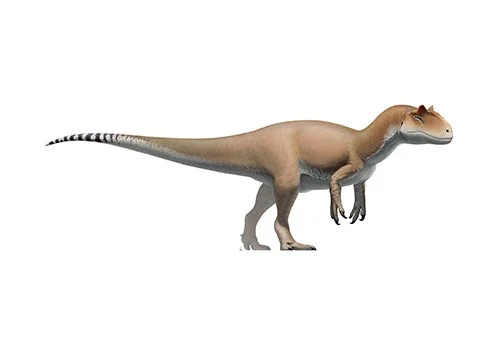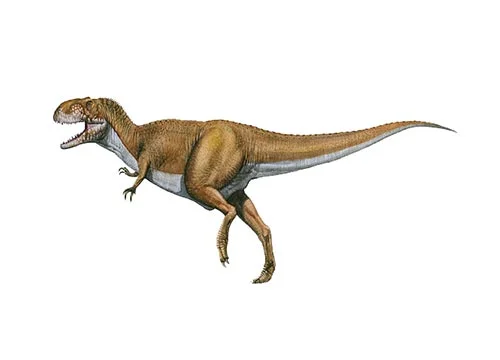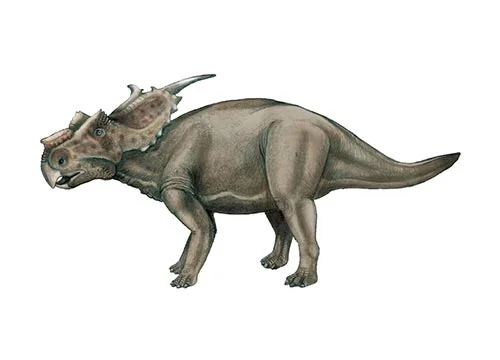Allosaurus (Different lizard)

Al-loh-sore-us
Othniel Charles Marsh - 1877
Carnivore
Estimated 8.5 meters long, some specimens up to 12 meter long
Large Theropod
A. fragilis (type), A. europaeus, A. jimmadseni
USA, Portugal, possibly Tanzania
Late Jurassic, 156-144 million years ago
Allosaurus Facts
The Allosaurus (/,ael@’so:r@s) is the genus belonging to the huge carnosaurian theropod dinosaurs, which lived from 155-145 million years in the Late Jurassic epoch (Kimmeridgian to late Tithonian).
It was first discovered in 1877 by Othniel Charles Marsh and was a massive bipedal predator. It was 8.5 meters (28 feet) long, but evidence from fragments suggests it may be as high as 12 meters (39 feet). Its three-fingered forelimbs were tinier and its body was supported with a lengthy and muscular tail. The genus is a complex taxonomy that includes three species that are valid, the most popular among them is A.fragilis.
Allosaurus was at the highest in the food chain possibly preying upon large herbivorous dinosaurs, and possibly other predators. Possible prey include ornithopods sauropods, and stegosaurids. Allosaurus was a common theropod that had a massive skull with a neck that was short with a long, slight sloped tail, and a diminution of forelimbs.
The largest specimen known as the definitive Allosaurus sample (AMNH 680) was estimated to be 9.7 metres (32 feet) long and had an approximate weight of 2.3 meters (2.5 shorter tons).
James H. Madsen described a range of bone sizes, which was interpreted by him to indicate an average length of 12-13 meters (39 to 43 feet).
The weight estimates are disputed and have since 1980 been ranging from 1,500 to 1,300 kilograms (3,300 pounds) between 1,000 and 4,000 kg (2,200 to 8,800 lbs). John Foster suggests that 1,000 kilograms (2200 pounds) is a reasonable weight for adults who weigh a lot from A. fragilis. Utilizing the subadult specimen known as “Big Al”, researchers employing computer models came up with an estimation of 1,500 kilograms.
The closely similar Genus Saurophaganax may have reached 10.9 meters (36 feet) in length. Another possible Allosaurus specimen was once designated to the Genus Epanterias (AMNH 567) but recent research suggests it is an individual species of genus.
David K. Smith studied Allosaurus fossils in quarrying and found that Cleveland-Lloyd Dinosaur Quarry samples are typically smaller than those of Como Bluff (Wyoming) or Brigham Young University’s Dry Mesa Quarry (Colorado). Another study conducted by Smith included Garden Park (Colorado) and Dinosaur National Monument (Utah) specimens did not provide any reason for the existence of multiple species based upon skull variations.
Kenneth Carpenter has found a wide variety of individuals, challenging the previous distinctions between species due to such factors as the shape of horns, as well as the proposed distinction of A.
Jimmadseni on the basis of its shape. A study by Motani and co. in 2020 suggests that Allosaurus could also be sexually diverse. The early discovery and study of Allosaurus is complicated by the multitude of names coined in the Bone Wars of the late 19th century.
The first fossil that was described in this story was a second-hand bone collected from Ferdinand Vandeveer Hayden in 1869. Joseph Leidy classified it as a portion from a vertebra at the end of its tail and then classified it into the European dinosaur Genus Poekilopleuron as Poicilopleuron valens.
Othniel Charles Marsh gave the remains the formal name of Allosaurus fragilis in 1877, derived from Greek allos/allos which means “strange” and sauros/sauros meaning “lizard” or “reptile”.
It was named “different lizard” because its vertebrae were distinct from the vertebrae of other dinosaurs discovered in the period of discovery. The bones were retrieved from the Morrison Formation of Garden Park located to the north in Canon City.



